In modern lifestyles, people are consuming more sodium than they should. It is estimated that the current level of sodium intake per person is about 3,400 milligrams every day. This is excessive when you consider the fact that doctors recommend 2,300 milligrams or less per day. High salt intake results in an increase in blood pressure, a condition which in turn increases the risk of a stroke or heart attack.
How to Reduce Sodium Intake
Controlling sodium intake might seem to be just another trivia of life. However, it requires a lot of dedication and motivation, most of which should stem from the health benefits of the decision to cut down on sodium intake. Here are a few ways through which you can reduce your sodium intake:
1. Eat Unprocessed Foods
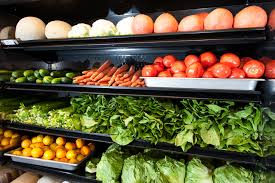 Eating fresh and unprocessed foods is one of the best strategies that can be applied to achieve lower sodium levels. Most of the salt consumed today is from foods that have been processed and packaged, though many food companies are trying to reduce the salt in their foods. For this reason, a good way of cutting down on the amount of salt you consume every day is to center your diet on fresh and unprocessed foods.
Eating fresh and unprocessed foods is one of the best strategies that can be applied to achieve lower sodium levels. Most of the salt consumed today is from foods that have been processed and packaged, though many food companies are trying to reduce the salt in their foods. For this reason, a good way of cutting down on the amount of salt you consume every day is to center your diet on fresh and unprocessed foods.
These include fresh fruits and vegetables, dried beans, dried peas, dried legumes, whole grain foods, nuts and seeds and fresh meat. The foods are best purchased fresh, or preserved but without the use of salt.
2. Check the Nutrition Information of Products
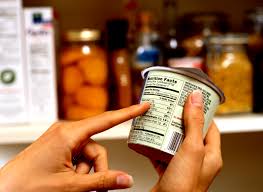 If you like to shop in a hurry, you should take time to adjust to a habit of carefully checking what ingredients are contained in the foods you purchase. Check the labels for information on the amount of sodium per serving and compare this to other similar products, and select the product with the least amount of sodium. Another important tip to keep n mind is that foods which advertise lower fat levels are more likely to have higher sodium levels to make up for the taste lost in cutting fat.
If you like to shop in a hurry, you should take time to adjust to a habit of carefully checking what ingredients are contained in the foods you purchase. Check the labels for information on the amount of sodium per serving and compare this to other similar products, and select the product with the least amount of sodium. Another important tip to keep n mind is that foods which advertise lower fat levels are more likely to have higher sodium levels to make up for the taste lost in cutting fat.
3. Be Careful When Cooking
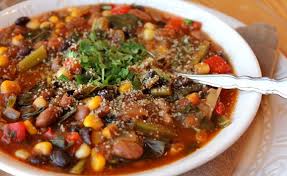 When cooking, always try to make meals with little or no salt requirements. Alternatively, you can replace salt with other spices and seasonings. Flavors that you can use in place of salt include lemon juice, mesquite, garlic and cooked onion, fresh herbs and vinegar. With vegetables, marinating them can improve the flavor with no need for additional salt. However, the alternative flavors have to be used carefully as they can create a meal with a weird taste if used in the wrong foods.
When cooking, always try to make meals with little or no salt requirements. Alternatively, you can replace salt with other spices and seasonings. Flavors that you can use in place of salt include lemon juice, mesquite, garlic and cooked onion, fresh herbs and vinegar. With vegetables, marinating them can improve the flavor with no need for additional salt. However, the alternative flavors have to be used carefully as they can create a meal with a weird taste if used in the wrong foods.
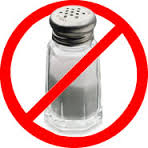 4. Put the Salt Shaker Away
4. Put the Salt Shaker Away
All the salt needed in your food should be added during the preparation of the meal. Adding salt to food on the table can result in the intake of more salt. With time, you will also come to appreciate the natural taste of foods.
5. Eat Homemade Food More Frequently
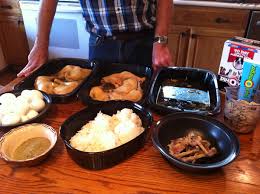 When it comes to ways on how to reduce sodium intake, staying away from restaurants is a top tip. Food cooked in restaurants tends to have higher amounts of salt. In addition, you always have the salt shaker on the table and will most probably fall into the temptation to add salt to your food. Cooking your food every day may sound like a heavy job, but can be simplified if you make your food in quantities and store it, then warm it during meal times.
When it comes to ways on how to reduce sodium intake, staying away from restaurants is a top tip. Food cooked in restaurants tends to have higher amounts of salt. In addition, you always have the salt shaker on the table and will most probably fall into the temptation to add salt to your food. Cooking your food every day may sound like a heavy job, but can be simplified if you make your food in quantities and store it, then warm it during meal times.
6. 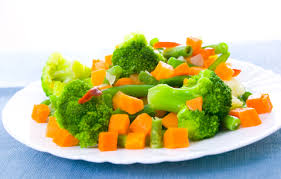 Eat Fresh Foods for Every Ounce of Food You Eat Out
Eat Fresh Foods for Every Ounce of Food You Eat Out
Whenever you need to eat out, you should compensate for the excessive sodium eaten with an equal amount of fresh and steamed vegetables. This will cut down the amount of sodium in your system, in addition to providing extra nutrition available in fresh vegetables.
7. Gradually Reduce the Amount of Salt in Foods
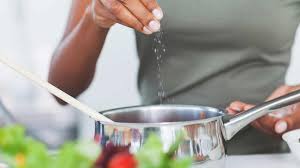 The main set back with a hasty reduction in salt amount is that the taste will be very noticeably different from what you are used to, and this will make you fall back to your previous amounts. A more sustainable method is to reduce your salt amounts in small steps. This way, the changes in taste will be so small that they will not affect your eating experience.
The main set back with a hasty reduction in salt amount is that the taste will be very noticeably different from what you are used to, and this will make you fall back to your previous amounts. A more sustainable method is to reduce your salt amounts in small steps. This way, the changes in taste will be so small that they will not affect your eating experience.
8. 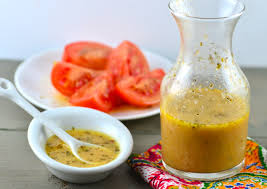 Use Homemade Salad Dressing
Use Homemade Salad Dressing
Bottled salad dressing exposes you to a similar amount of sodium as you would have if you chose to simply sprinkle salt on your salad. For this reason, making your own dressing is a healthier option in regard to sodium levels. All you need to make a good salad dressing is oil, vinegar and mustard.
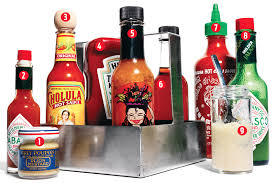 9. Use Salty Condiment Sparingly
9. Use Salty Condiment Sparingly
Condiment is not usually very high on salt, but if over used, can lead to the uptake of excess salt. It is, therefore, necessary to limit the amount of ketchup you use. Ideally, you should also go for ketchup with lower salt levels.
10. Tips When Eating Out
 When eating out, here are some tips on how to reduce sodium intake:
When eating out, here are some tips on how to reduce sodium intake:
- Since foods served in restaurants always have enough salt, you can simply choose to keep half of your food for the next meal.
- Check the nutrition information of a restaurant before eating out. Nowadays, this can be done online for most big restaurants. Alternatively, you can check the menu or ask the waiter in a restaurant.
- You can also ask to be provided food with low amounts of salt.
- Always take toppings such as sauce and dressings on the side as these can be very high in sodium.
